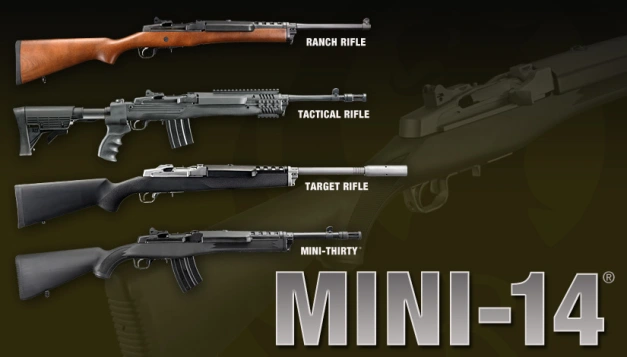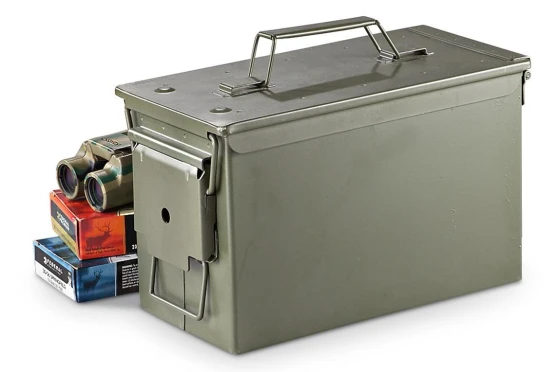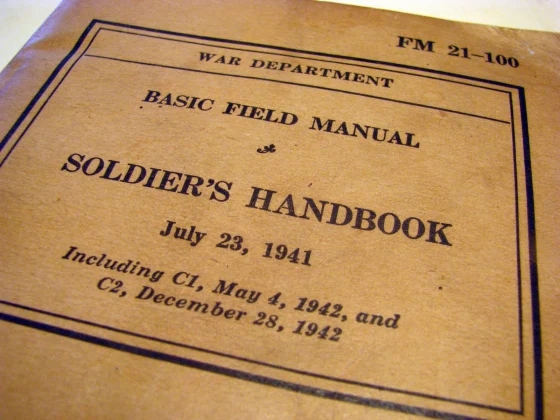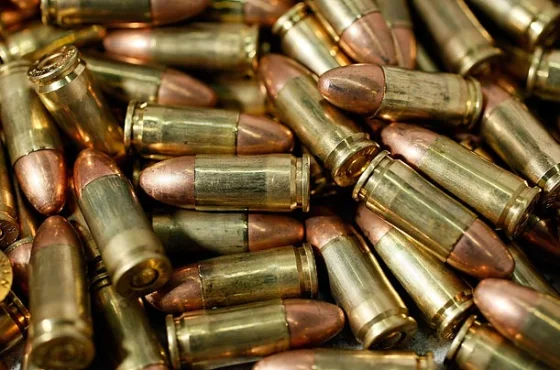“Arms makers for responsible citizens.”
– Slogan for Sturm, Ruger & Co. –
Ruger Mini-14 and Mini-30 Essentials:
- Ruger’s Mini-14 website
- Ruger Mini-14 Wiki
- PerfectUnion.com’s Mini-14/30 Forum
- RugerTalk’s The Ruger Mini-14 In Military Use
Ruger Mini-14 and Mini-30 rifles have a similar operational design to the ultra-reliable M-1 Garand and M-14 rifles. When operated with factory magazines and quality ammunition, the rifles are handy and reliable.
Ruger Mini-14 and Mini-30 triggers have traditionally been a little stiffer than AR-15 triggers, but they are still very adequate for farm and ranch work, as well as self-defense.
 The Mini-14 was used extensively and effectively by the Irish Republican Army against the British occupation of North Ireland. For many years it was used by the NYPD’s Emergency Services Unit. Until 2015 it was the primary rifle of Bermuda’s 609 member military, the Bermuda Regiment (photos above). It can be found on duty at countless correction facilities across the United States. It was made famous in the 2nd through 5th seasons of NBC’s 1980’s television show The A-Team (seen right).
The Mini-14 was used extensively and effectively by the Irish Republican Army against the British occupation of North Ireland. For many years it was used by the NYPD’s Emergency Services Unit. Until 2015 it was the primary rifle of Bermuda’s 609 member military, the Bermuda Regiment (photos above). It can be found on duty at countless correction facilities across the United States. It was made famous in the 2nd through 5th seasons of NBC’s 1980’s television show The A-Team (seen right).
Ruger Mini-14 rifles were originally designed for .223 caliber ammunition (The Difference Between .223 Remington Caliber vs. 5.56mm NATO ammunition is discussed on the AR-15 page). In older rifles you can expect 5.56 mm NATO ammunition to fit and function in the rifles, but will damage or prematurely wear them out. Recently Ruger redesigned the rifle to shoot 5.56 mm NATO ammunition. If you buy a Mini-14 make sure that it is a later model designed for 5.56 mm so that you will be able to take advantage of the increased capability and availability of the military round. Ruger is now offering the Mini-14 chambered in the new .300 Blackout caliber.
The Mini-30 rifle uses the 7.62×39 mm round that the AK-47 rifle uses.
Only use Ruger factory magazines. They are significantly more expensive than aftermarket magazines, but they are the only ones that work. ALL AFTERMARKET MAGAZINES SUCK AND SHOULD NOT BE DEPENDED ON FOR SELF DEFENSE. No exceptions.
back to top
Ruger Mini-14 (.223 Remington/5.56x45mm NATO) Specifics:
Mini-14 Series By Year:
180 Series:
- Produced from 1974-1977.
- Brass ejects upwards.
- Shipped from factory with wood handguard installed.
- Original Mini-14, no longer supported by Ruger (i.e., no 180-specific parts available)
181 – 186 Series:
- Produced from 1978-1999.
- “Standard” Mini-14
- No factory scope mounts, single blade front sight, low round rear peep sight.
- Brass ejects upwards.
- Still supported by Ruger factory parts.
196 – 197 Series:
- Produced from 2000-2004.
- Same as 181-186 Series.
187 – 188 Series:
- Produced from 1982-1995.
- Mini-14 Ranch Rifle
- Factory Scope Mounts, flip-up rear sight, single blade front sight.
- Brass ejects to side to avoid contact with scope.
- Still supported by Ruger factory parts.
195-197 Series:
- Produced from 1996-2004.
- Mini-14 Ranch Rifle.
- Same as 187-188 Series.
580-583 Series:
- Produced from 2005-Present.
- Mini-14 Ranch Rifle.
- Winged Rear Peep Sight, Winged (3-blade) Front Sight.
- Integrated Scope Mounts.
- At some point in the 580 Series, Ruger introduced the “heavier,” flanged/tapered barrel which improved accuracy and decreased heat sensitivity (stringing).
Mini-14 Serial Numbers and Years of Production:
- 180 Serial Numbers and Years of Production
- 181-196 and 196-197 Serial Numbers and Years of Production
- 187-197 Serial Numbers and Years of Production
- 580-583 Serial Numbers and Years of Production
back to top
Ruger Mini-30 (7.62x39mm Soviet) Specifics:
back to top
Ruger AC556 (5.56x45mm NATO, Machinegun) Specifics:
back to top
Ruger Mini-14 / Mini-30 Cleaning & Maintenance:
back to top
Pros & Cons of the Mini-14/30:
Pros:
x
Cons:
x
back to top
Ruger Mini-14 / Mini-30 Magazines:
Ruger Factory Steel Magazines:
Only use Ruger factory magazines. Ruger factory steel magazines are heavy (30 rounders are 9 ounces empty!) and expensive, but extremely reliable. They are significantly more expensive than aftermarket magazines, but they are the only ones that work. ALL AFTERMARKET MAGAZINES SUCK AND SHOULD NOT BE DEPENDED ON FOR SELF DEFENSE. No exceptions.
Traditionally Ruger’s company philosophy held that civilians did not have any reason to own high-capacity magazines. Civilian rifles were sold with 5-round or 10-round magazines. High-capacity (20-round and 30-round) magazines were intended for law-enforcement. The limited number of factory manufactured high-capacity magazines that have made it to the civilian market are being sold for a premium. Evidently Ruger is starting to see the light as they have just started manufacturing quality high-capacity magazines for their 10/22 rifles. Hopefully they will soon follow suit and start mass-producing their high-capacity Mini-14 and Mini-30 magazines. If they do then you can expect to see a dramatic rise in the demand for their rifles.
For the sake of argument, several brands of aftermarket Mini-14 and Mini-30 magazines are discussed
Promag Polymer Magazines:
Promag brand polymer magazines suck. They are low quality. The plastic is brittle and can crack. The feed lips are not rigid enough and bow out as the magazine is fully loaded, effecting feeding and reliability.
Promag Steel Magazines:
Promag steel magazines are heavy, and not very reliable.
Tapco 1st & Second Generation Magazines:
Tapco 1st Generation magazines were not very reliable. Avoid them.
The new Gen-2 version are steel reinforced and are considered very reliable with brass case ammo, but you may still may have occasional feeding issues with steel case ammunition. The feed lips are beefy and you shouldn’t have any problems with them flexing with the magazine fully loaded. Traditionally Savannah Arsenal shies away from Tapco products, but these appear to be the most affordable and reliable of the aftermarket magazines.
back to top
Ruger Mini-14 / Mini-30 In The Media:
American Rifleman Magazine’s
8 Things You Might Not Know About The Mini-14:
The model’s name, Mini-14, is derived from the military’s M14 rifle. While developing the Mini-14, Ruger used the M14 as a base model for the new rifle—all the while incorporating a number of cost-saving alterations and innovations.
That said, the Mini-14 doesn’t share quite as much in common with the M14 as its name might suggest. Aside from shooting .223 Rem./5.56x45mm NATO rather than .308 Win./7.62x51mm NATO, the rifle uses a Garand style rotating bolt and simplified gas system.
It’s said Bill Ruger felt that, with better timing, the Mini-14 would have been the military’s choice as a successor to the M14. As we all know, history favored the AR-15 design that Colt had purchased from ArmaLite, instead, and the M16 was born.
The Ruger Mini Thirty, an evolution of the Mini-14, developed its own following upon its introduction in 1987. Yes, the Mini Thirty’s 7.62×39 mm chambering made it popular with owners of the venerable AK-47 build, but it made an impact on hunters, too—the cartridge’s ballistics were deemed more suitable for deer and similar game than the Mini-14’s .223 Rem.
The infamous 1986 FBI Miami shootout nearly single-handedly spurred the FBI and police departments around the country to begin carrying more powerful handguns. Why? During the fight, bank robber Michael Lee Platt did most of the regrettable incident’s damage while armed with his Mini-14, which possessed significantly more firepower than anything the responding law enforcement officials had brought with them.
At one point, Ruger began developing versions of the Mini-14 that were to be chambered in .308 Win. and .243 Win. Unfortunately, mechanical and production issues kept the rifles from ever being produced.
Like most of history’s more famous firearms, the Mini-14 has made its rounds in Hollywood. Versions of the rifle have popped up on screens large and small throughout the years, though the Mini-14’s most notable appearances probably came on “The A-Team.” During the show’s run, “Hannibal” Smith, Templeton “Faceman” Peck, “Howling Mad” Murdock and “B.A.” Baracus were all seen with at least one prop variant of the rifle. What beats Mr. T and a Mini-14? That’s a rhetorical question, mind you.
It’s possible, albeit difficult, to find a Ruger Mini-14 chambered in the .222 Remington cartridge. In an attempt to broaden its marketplace, Ruger once produced a number of rifles in .222 Rem. for sale in countries that prohibit civilian ownership of firearms that chamber military cartridges. The practice is a thing of the past, making Mini-14’s chambered in .222 Rem. one of the model’s rarest variants.
American Rifleman Magazine’s
Five Reasons To Reconsider The Ruger Mini-14:
by Brian Sheetz – Tuesday, March 22, 2016
When it comes to .223 Rem. semi-automatic rifles, Ruger’s Mini-14 has long been one of the obvious choices. And it’s no wonder, considering it offers nearly the same handiness as the M1 Carbine, the ballistics of the AR15, and the feel of the classic M1 Garand and M14. The Mini’s popularity confirms its strong perceived relevance among a wide range of users, and sustained sales for more than 40 years is evidence of its sound design—even if it’s unfairly judged by the same criteria as today’s predominant platform, the AR, which enjoys the huge advantages of U.S. military adoption and unlimited manufacturing sources. So while some consider the Mini a bit dowdy or lowly, it is actually a serious standout worth giving a second look. Here are just five of the many reasons why a Mini Ranch, Tactical, Target or Thirty model should be on your short list the next time you shop for a modern rifle:
1. The AR may not be right for you.
As difficult as it may be for some to believe, not everyone finds the AR platform appealing. There are a number of reasons why, but two come quickly to mind. The first is that its appearance may be too “tactical” for some people’s tastes; aesthetics can be subjective. And the second is that its controls may not be intuitive for some users because of their physical makeup and/or lack of prior training. In contrast to the former, most versions of the Mini have a sporter-like profile and some feature wood stocks, making them right at home in saddle scabbards, pickup trucks and, more importantly, in the minds of many for whom the sight of a traditional rifle is less likely to arouse unwanted attention. As to the latter, the Mini’s centrally located safety, its hook-rock-and-lock magazine design, and its beefy, integral charging handle make for a straightforward manual of arms with the respective benefits of rapid employment, secure loading and positive chambering. Add to these factors the Mini’s light overall weight (6 lbs., 12 ozs.) and handiness (36¾”), and you have a combination of qualities that is difficult to ignore.
2. The latest Minis are more accurate.
The Mini has long suffered from a reputation among many users for poor accuracy. Theories abound as to why that is the case: My own is that the considerable mass of the operating slide impacts harshly against the gas block, which is bolted directly to the relatively thin barrel, not allowing the barrel to return to its precise point of rest between shots. But in 2005, Ruger retooled the Mini-14 production line and most shooters agree that, beginning with the 580-prefix series guns made since then, shooting 2″ groups at 100 yds. is not out of the question. Again, it may come as a surprise to some, but not everyone needs a half-m.o.a.-capable rifle. Many tasks just don’t require that level of accuracy. In fact, most hunting and self-defense situations are in that category. Also, my experience is that accuracy and reliability in semi-automatic rifle actions is usually inversely proportional. So, anything that the Mini lacks in the way of accuracy is, practically speaking, likely more than made up for in reliability and cleanliness of operation and in lack of ammunition sensitivity.
3. The Mini is one of few semi-auto .223s available in stainless steel.
For boaters, coastal dwellers and others for whom corrosion is an issue, the Mini is one of the few factory semi-auto rifles available in stainless steel, which can greatly reduce the necessity for fastidious, immediate maintenance. Because of their simple fixed-gas-piston system and Garand-style rotating bolt with two large locking lugs, Minis are generally not maintenance-sensitive anyway, but when it comes to harsh environments, particularly, the advantages of keeping stainless steel free of corrosion are undeniable—especially when gun maintenance cannot be performed as regularly as it should. Note that, with the Mini, stainless construction means that the barrel, receiver, bolt, operating rod, trigger group and many other small parts are stainless steel. Blued guns, of course, use chrome moly steels in many of those same large components, but even in those guns, many of the smaller components are made of stainless. The broader point, of course, is that the Mini is made largely of steel—not polymers or aluminum—and steel’s material properties lend it a durability and longevity that lighter weight materials simply cannot match.
4. Twenty- and 30-round factory magazines are widely available and reasonably priced.
This had been a longstanding bugaboo that plagued the Mini-14’s reputation. Ruger has produced 20- and 30-round magazines since the gun’s earliest days, but, until just a few years ago, it sold the latter only through law enforcement channels. That spurred the production of a raft of inferior aftermarket magazines, which did nothing to bolster the Mini’s otherwise enviable reputation for reliability. Nowadays, factory-fresh, Ruger steel magazines—a durable design that has functioned virtually flawlessly since its inception—are available for sale in the usual commercial channels at reasonable prices. In addition, flush-fitting five-round magazines are also available. All feature a projection on the follower that activates the gun’s bolt hold-open once the last round has been fired. (The hold-open can also be manually activated by way of a button atop the receiver rather easily.)
5. It’s now available in .300 Blackout.
Just recently, Ruger announced that it is offering the Mini in .300 Blackout, which should make an already proven platform even more appealing and versatile—especially for those who would like to hunt with a Mini in areas that require a caliber greater than that of the .223 Rem. Of course the Mini has been available in 7.62×39 mm for years as the Mini Thirty, albeit limited to 20-round factory magazines, but the new .300 Blackout Mini brings .30-cal. presence to the familiar platform with the advantage of feeding from the same .223-cal. 20- and 30-round magazines that are now so widely available. Ruger is selling the gun with a magazine marked “300 AAC Blackout” simply as a precaution, but there is reportedly no difference mechanically between it and the .223 magazine. It makes one wonder if the smart move might be to buy two Minis, a .223 Rem. and a .300 Blackout, along with a raft of magazines to fit either interchangeably as a practical, powerful hedge against bad times.
back to top
Savannah Arsenal’s Related Pages:
- Savannah Arsenal’s Firearms Essentials Page
- Savannah Arsenal’s Ammunition Essentials Page
- Savannah Arsenal’s Marksmanship Page
- Savannah Arsenal’s Gun Cleaning & Maintenance Page
- Savannah Arsenal’s Tactical Rifle Essentials Page
- Savannah Arsenal’s Tactical Rifle Accessories Page
- Savannah Arsenal’s Tactical Rifle Ammunition Page
- Savannah Arsenal’s Tactical Rifle Optics Page





































